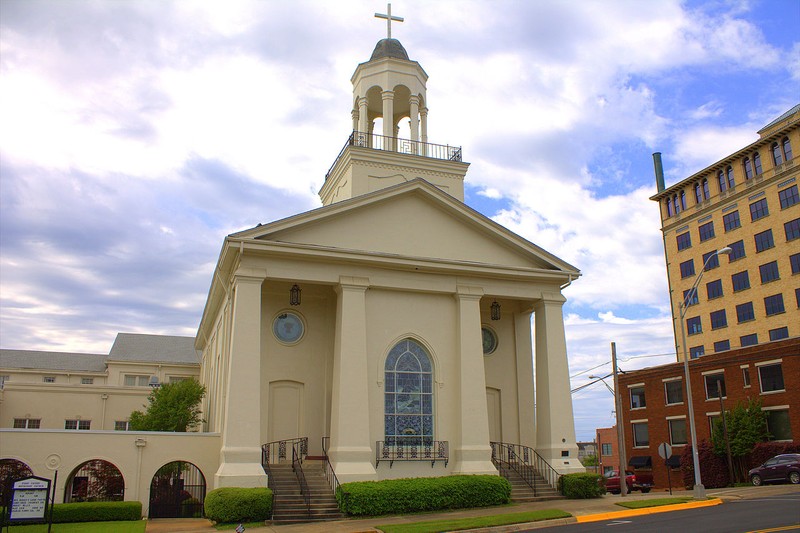First Methodist Church
Introduction
Text-to-speech Audio
Images
First Methodist Church was built in 1861 and is known for its monumental Greek Revival architecture and association with the Civil War.

Backstory and Context
Text-to-speech Audio
The first Methodist preacher in the county was Dr. Job M. Baker, who came in 1839. War with the Cherokees forced him and his family to seek refuge in Fort Crawford not long after they arrived in the county. It was there that the congregation was formed as Baker started to preach, which attracted a growing number of congregants. From 1845 to 1853, the congregation worshipped in a schoolhouse before buying a building of their own in 1853. Then, as stated above, the congregation built its current church in 1861. Unfortunately for the contractors, the Civil War hit the local economy hard and they were not paid for their work until 1868.
Marshall was one of the two headquarters of the Trans-Mississippi Department (the other was New Orleans), which was in charge of the Confederate war effort in an area encompassing Missouri, Arkansas, Texas, Louisiana (the portion of the state west of the Mississippi River), and Indian territory that would later become the state of Oklahoma. The region provided the Confederacy with important resources including rice, cotton, and sugar, and it also had large numbers of horses, mules, oxen, and cattle. It also provided the Confederacy with tens of thousands of soldiers for the war. The church was the first location of the conference of governors from these states. The governors of Texas and Missouri and representatives from Louisiana and Arkansas spoke during the 1862 conference.
Over the years the church has been altered on several occasions, including major renovations in 1927, 1949, and 1958. The north facade, where the main entrance is, appears much as it did originally. The church was added to the National Register of Historic Places in 1980.
Sources
"First Methodist Church-Marshall." Stephen F. Austin State University. Accessed October 13, 2020. http://www.sfasu.edu/heritagecenter/4947.asp.
Prushankin, Jeffery S. "Civil War Trans-Mississippi Theater 1861–1865." Center of Military History. 2015. https://history.army.mil/html/books/075/75-3/cmhPub_75-3(rev).pdf.
Turner, Wm. Keeton & Anderson, Lissa. "First Methodist Church." National Park Service - National Register of Historic Places Nomination Form. July 16, 1980. https://catalog.archives.gov/OpaAPI/media/40972513/content/electronic-records/rg-079/NPS_TX/80004133.pdf.
Wikimedia Commons: https://commons.wikimedia.org/wiki/File:FirstMethodistChurchMarshall.jpg
